

CarExpert.com.au
The CarExpert team's favourite cars of 2025
3 Days Ago

Marketplace Editor
Initial Australian details for the new-generation 2024 Hyundai Konahave been released, with an expansive range of powertrains confirmed for the local market including a hybrid and two EV options.
The all-new Kona will continue to be sourced from Korea, though we can hope for decent supply of the Kona EV given European versions of the electric model will be sourced from the brand’s Czech plant – fingers crossed.
Speaking of, the Kona Electric will again offer Standard Range and Extended Range battery options in Australia, with a new-to-Australia Kona Hybrid to join the range around the same time (Q4 2023), with updated versions of the existing 2.0-litre petrol and 1.6-litre turbo petrol models kicking off proceedings from mid-year.
Hyundai’s local arm has also indicated what features we can expect to be offered across the line-up. Here’s everything we know so far.

The full line-up hasn’t been confirmed as yet, but Hyundai Australia says its “current plan” is to offer two key trim levels for each powertrain (2.0 FWD, 1.6T AWD, 1.6 HEV, EV Standard, EV Extended). Expect a lower Active or Elite-type base model, with a Highlander flagship in each guise.
A sporty N Line option package will be offered as an option for ICE and Hybrid variants, in a similar strategy to the larger Tucson, rather than the current model which has the N Line as a standalone variant. It appears the local Electric won’t offer this package despite European models being confirmed to get an N Line version.
Further details of this option pack will be announced in due course, but we have global images of this variant from the reveal – check out the wing!
While the Kona Electric will miss out on the N Line option pack, Hyundai has confirmed an optional Technology Pack for the high-grade EV for our market, though stopped short of confirming what inclusions this will bring.
As noted earlier, the Kona Electric will differ from the related Kia Niro (which shares its K3 platform) in offering two different battery sizes. The Kia only offers the Extended Range option globally in its latest generation.
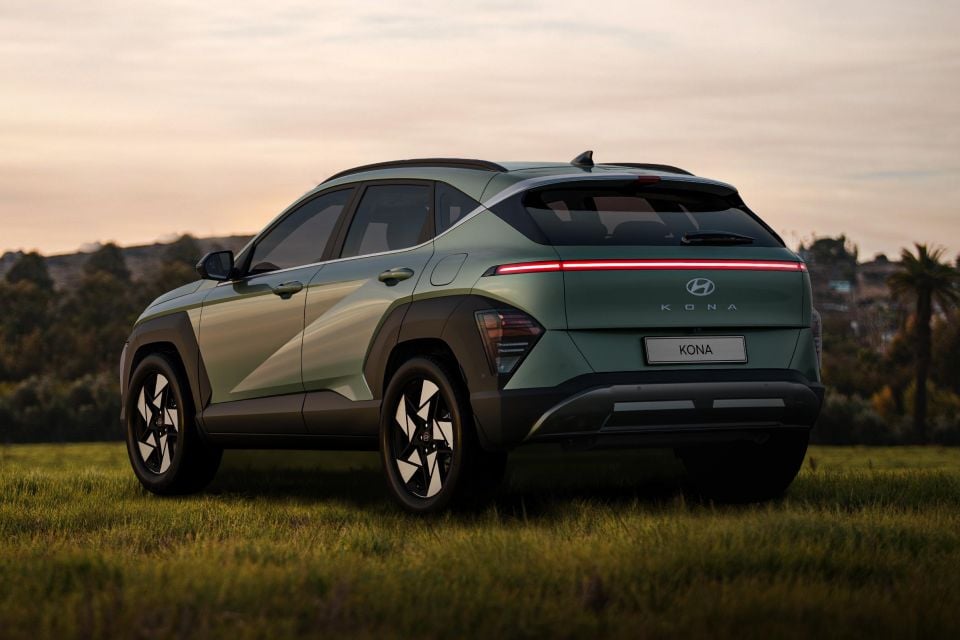
The powertrain line-up for Australia will include new options or revised versions of existing offerings.
Petrol-powered Kona models will again offer a 2.0-litre naturally aspirated FWD entry version, complemented by a 1.6-litre turbocharged AWD variant.
Hyundai says both ICE models will receive upgrades for “greater efficiency”, with the turbo AWD drivetrain swapping out the old model’s seven-speed dual-clutch automatic for a conventional eight-speed automatic like the new Kia Seltos.
The base 2.0-litre will continue to drive the front wheels by Hyundai-Kia’s Intelligent Variable Transmission; or CVT. Further details like outputs and efficiency figures will be confirmed closer to launch.
New to Australia is the Kona Hybrid, which will run the same 104kW/265Nm 1.6-litre hybrid drivetrain as the Kia Niro HEV.
It pairs a 1.6-litre GDi direct-injection and naturally aspirated four-cylinder petrol engine with an electric motor and small lithium-ion battery. Drive is sent to the front wheels via a six-speed dual-clutch automatic.
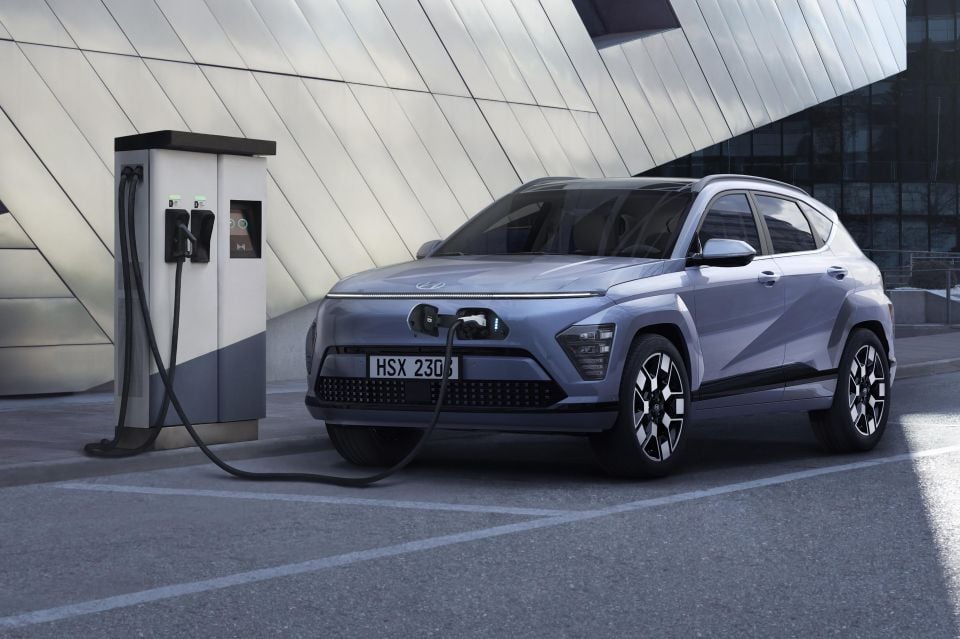
As for the Kona Electric, it will offer both Standard Range and Extended Range options as noted earlier.
Hyundai has indicated that the Kona Electric’s powertrain and specifications will “differ slightly” between European and Korean-produced models, though earlier this week the brand’s European arm released initial specifications for the EV model.
The Standard Range in Europe gets a 48.4kWh lithium battery – around 9.0kWh more than the old model – mated to a 115kW/255Nm electric motor on the front axle. Driving range hasn’t been confirmed for the European version of this variant, though its predecessor with a smaller battery pack managed 305km on the WLTP cycle.
Meanwhile, the Long Range gets a more powerful 160kW/255Nm e-motor, hooked up to a 65.4kWh lithium battery. The new model has a claimed range of over 490 kilometres on the WLTP cycle, which is an improvement on its smaller predecessor’s 484km claim.
Further details of the powertrain line-up will be detailed closer to each variant’s respective launches, with ICE models lobbing mid-2023 while the Hybrid and Electric will be arriving during the fourth quarter of 2023.
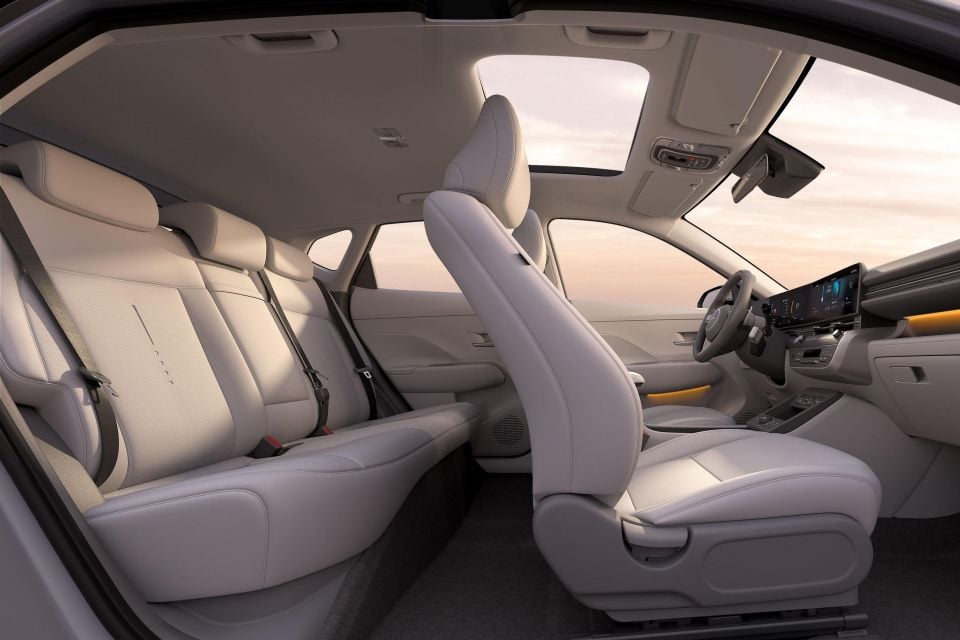
The new Kona moves to the Hyundai Group’s latest K3 small car architecture, which underpins the i30 Sedan (Avante/Elantra) as well as the latest Kia Niro.
With new underpinnings comes revisions to the chassis dimensions, which in the case of the new Kona is a pretty substantial increase in most metrics.
Changes include:
CarExpert understands the new Kona will be much closer in size to the Kia Seltos as having one of the larger cabins in class, compared to its predecessor which was smaller than the i30 Hatch on which it’s based.
Hyundai has also confirmed substantial developments under the skin to reduce NVH, which was a key criticism of the outgoing model. The company has increased body and chassis rigidity, applied “best-in-class” sound absorption materials in more places, added acoustic film to the windscreen glass, and added new hydro bushings to the suspension which improve both NVH and ride quality.
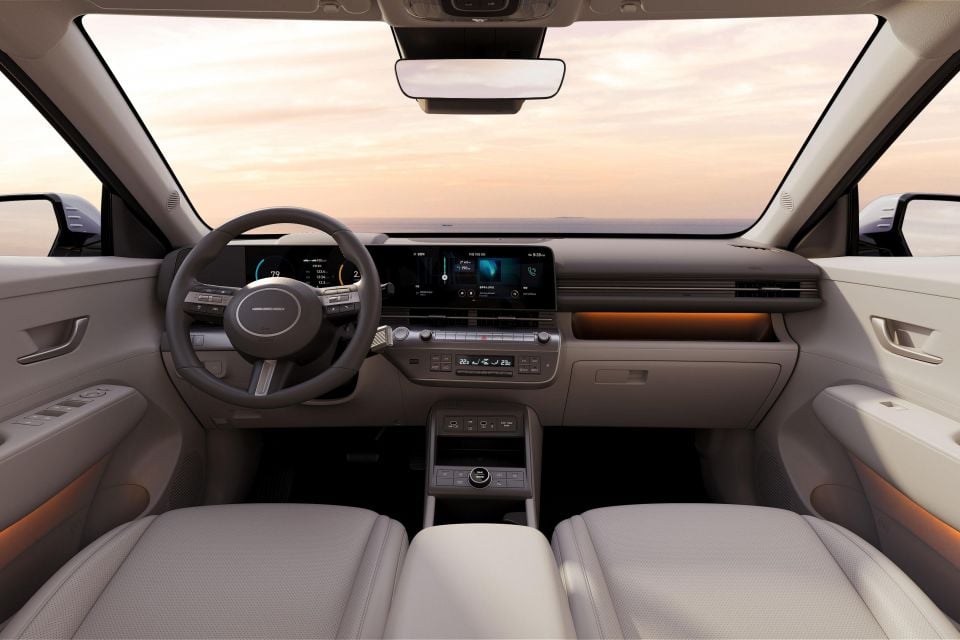
While full pricing and specifications for the Australian market are still under wraps, Hyundai’s local arm has confirmed several new features for the Kona line-up which will be offered Down Under.
Highlights include:
Hyundai has indicated the Kona will offer a tow rating of “over 1000kg” (final figure TBC), and is targeting a five-star ANCAP safety rating – as you’d expect.
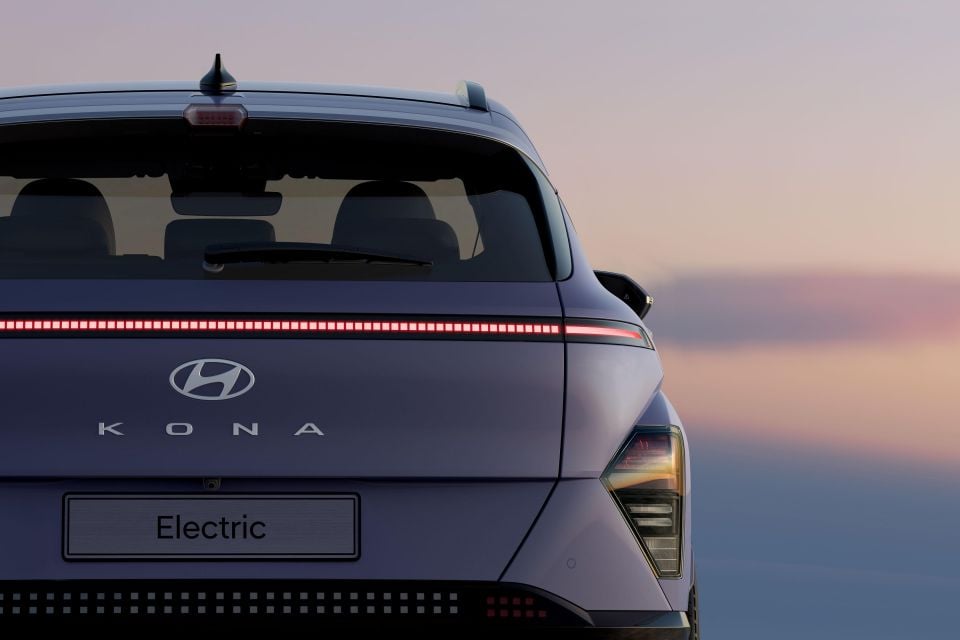
Stay tuned to CarExpert for all the latest Kona updates, and let us know your thoughts in the comments
MORE: 2024 Hyundai Kona revealed, here from mid-2023 MORE: 2024 Hyundai Kona Electric detailed MORE: Everything Hyundai Kona
Where expert car reviews meet expert car buying – CarExpert gives you trusted advice, personalised service and real savings on your next new car.
James Wong is an automotive journalist and former PR consultant, recognised among Australia’s most prolific motoring writers.


CarExpert.com.au
3 Days Ago


Damion Smy
3 Days Ago


Damion Smy
4 Days Ago


Josh Nevett
4 Days Ago


Max Davies
4 Days Ago


Damion Smy
4 Days Ago